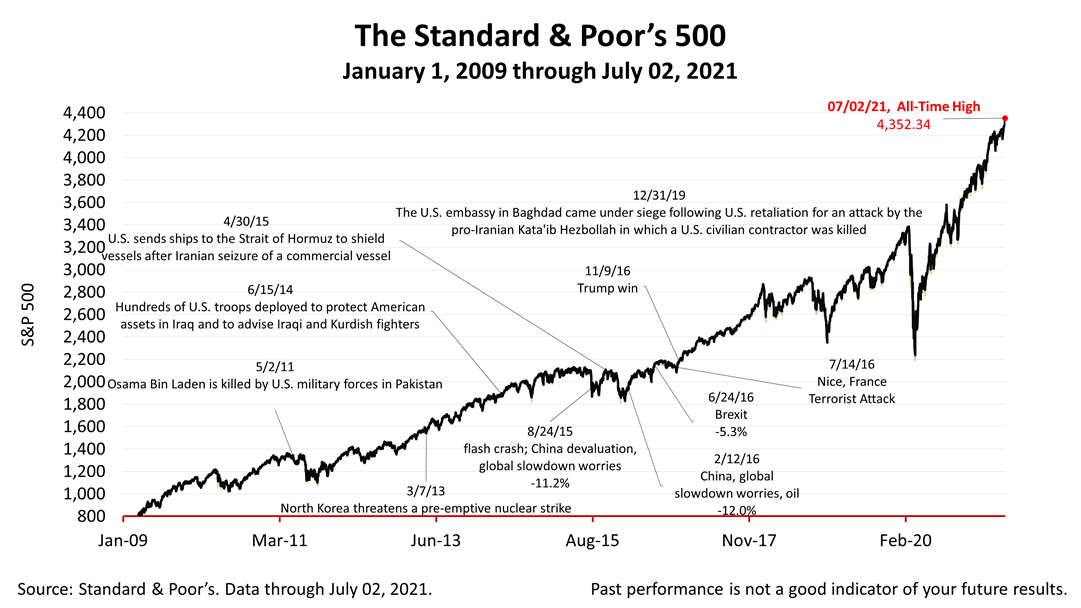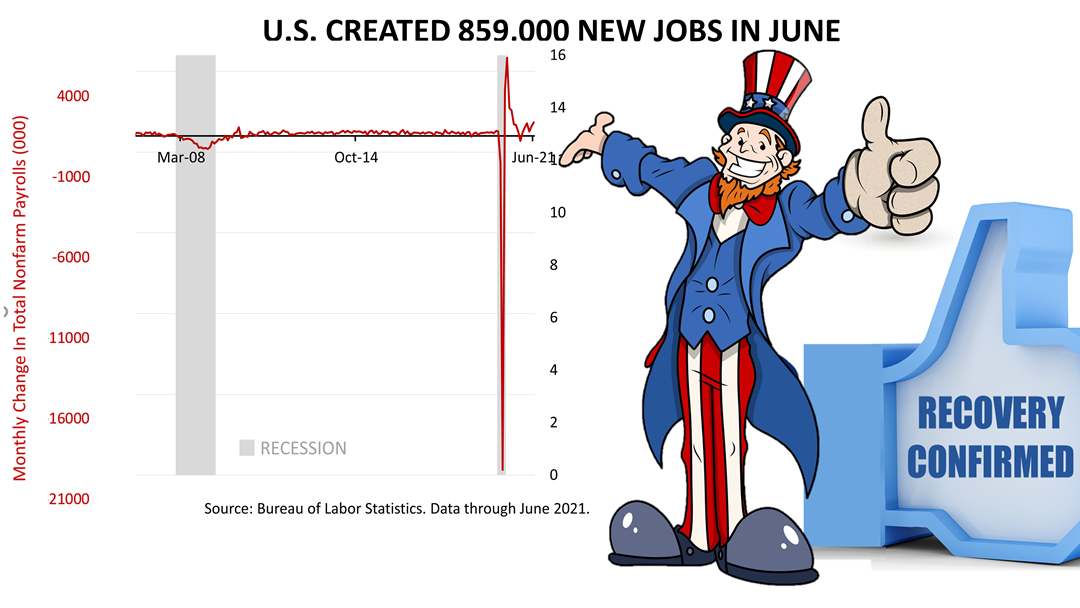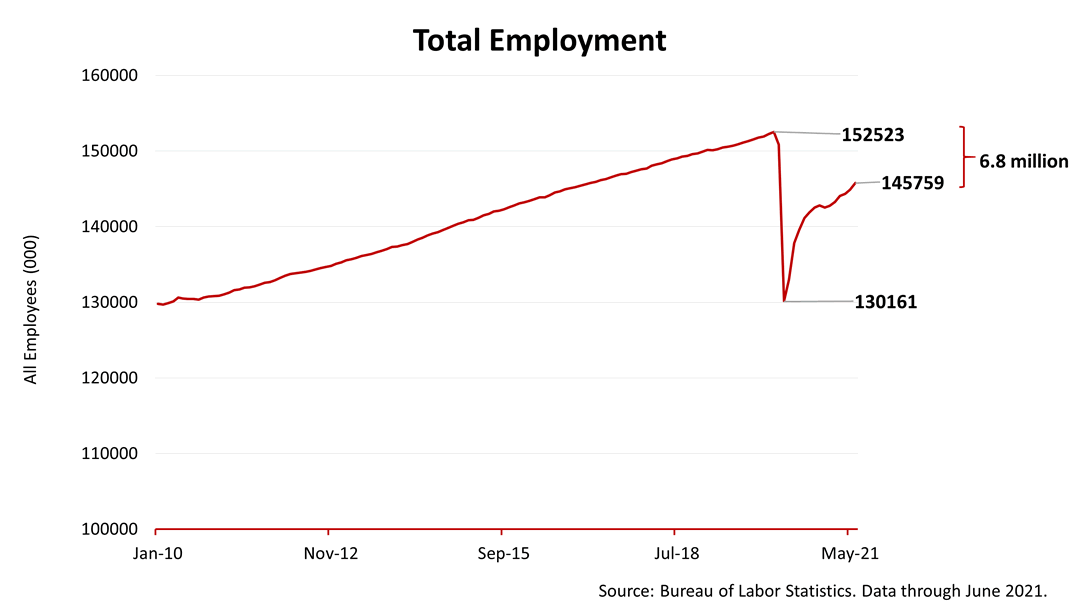The U.S. created 850,000 new jobs in June, considerably more than the 680,000 expected and confirming the labor market recovery from the pandemic is progressing.
Historically, 95,000 new jobs per month are required to maintain a stable unemployment rate and keep up with population growth, and last month’s figure of 850,000 was the largest gain in 10 months. The economy lost about 21 million jobs in the pandemic.
Total employment in the U.S., also known as non-farm payroll employees, peaked at 153 million in February 2020, before plunging to 130 million in April 2020. Since peaking in February 2020, the U.S. added 15.8 million jobs, which is 6.8 million jobs short of the full employment level reached before the outbreak struck.

The U.S. Federal Reserve System, which is responsible for managing the nation’s financial health, has a dual mandate under law to achieve full employment and stable prices, meaning manage inflation.
Today’s strong jobs numbers confirmed the Fed is making progress on achieving full employment. Whether the Fed can also achieve stable prices and manage inflation remains less clear.
The 12-month rate of inflation, as measured by the Personal Consumption Expenditure Deflator (PCED) – excluding food and energy prices, surged from 1.4% in the 12 months ended February 28 to 3.1% in the 12 months ended April 30.
 Despite inflation fears, the Standard & Poor’s 500 stock index closed this week at an all-time high of 4,352.34. The index gained +0.75% from Thursday and +1.65% from last week.
Despite inflation fears, the Standard & Poor’s 500 stock index closed this week at an all-time high of 4,352.34. The index gained +0.75% from Thursday and +1.65% from last week.

The S&P 500, a measure of the financial strength U.S., is up +64.18% from the March 23rd, 2020, bear-market low. While challenges, financial risks, and uncertainty may seem daunting, the U.S. continues to recover fast and strongly and there’s plenty to celebrate this July Fourth!



